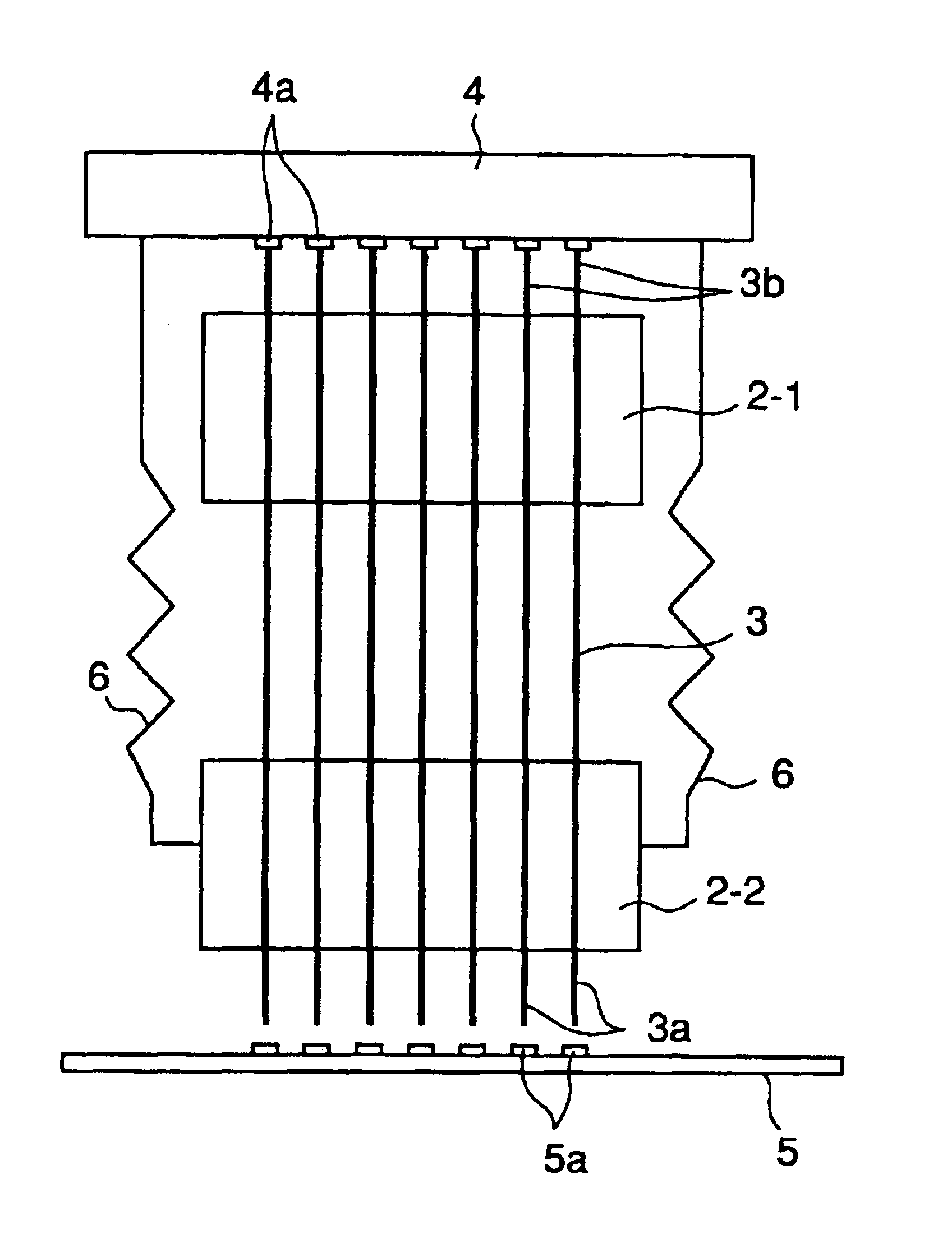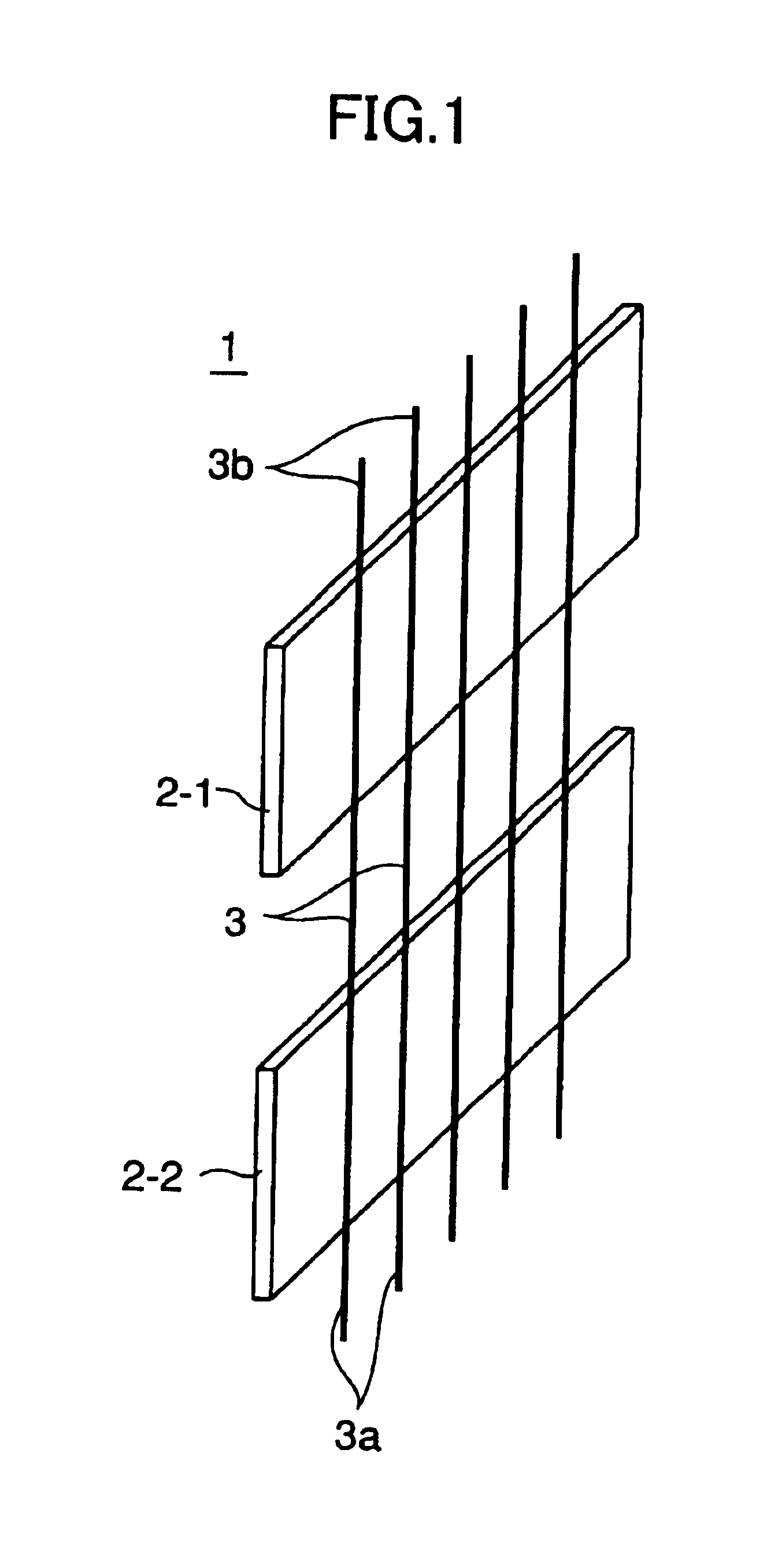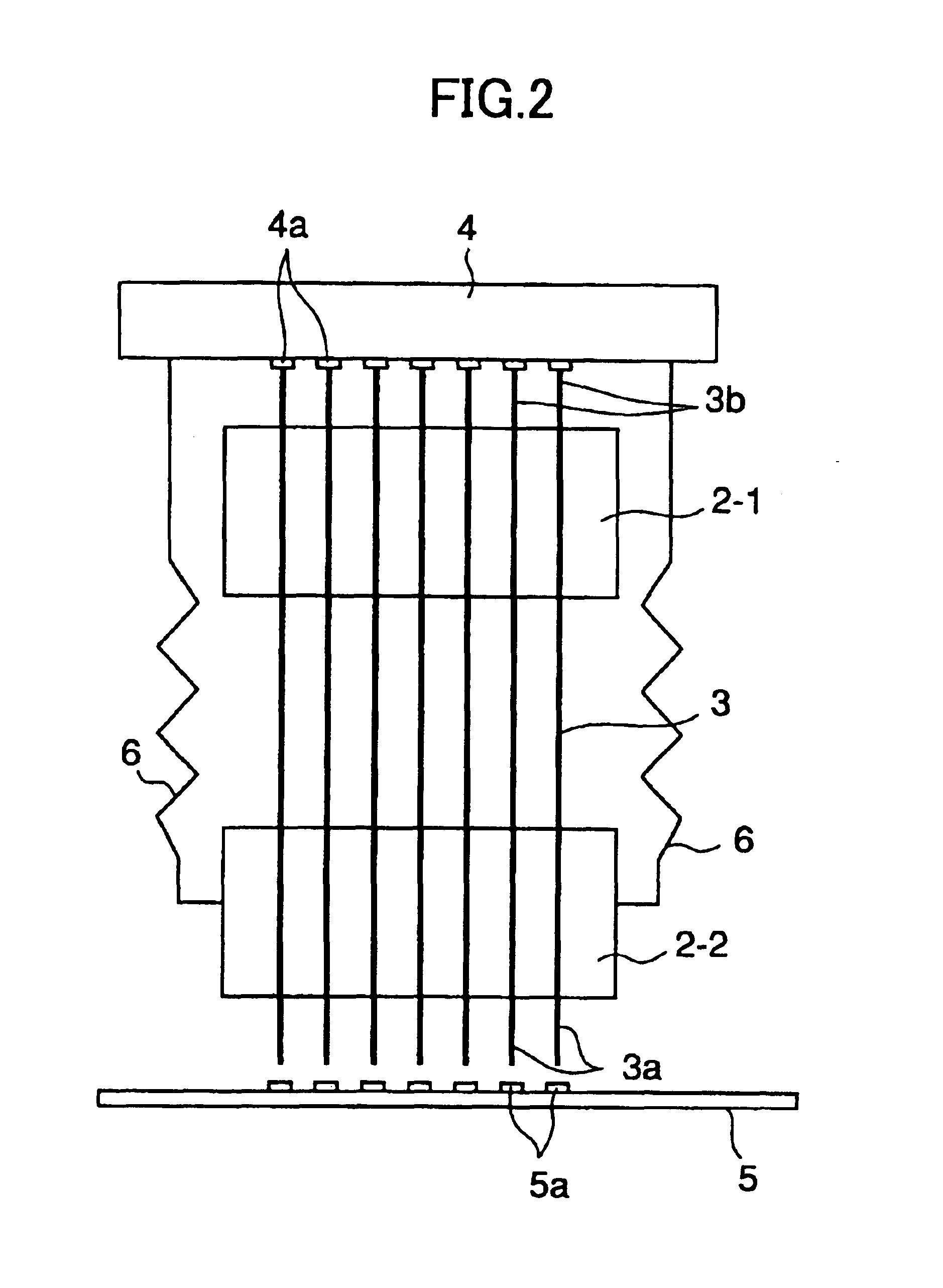Contactor for testing miniaturized devices and components
- Summary
- Abstract
- Description
- Claims
- Application Information
AI Technical Summary
Benefits of technology
Problems solved by technology
Method used
Image
Examples
first embodiment
(FIRST EMBODIMENT)
[0099]FIG. 1 is an oblique view of the contactor according to a first embodiment of a present invention.
[0100]As represented in FIG. 1, the contactor of the first embodiment of the present invention is formed of two thin substrates 2-1 and 2-2 and a plurality of wires 3. The substrates 2-1 and 2-2 are thin substrates of an insulating material such as polyimide. The substrates 2-1 and 2-2 are disposed in a spaced manner and the plural wires 3 are provided parallel with each other so as to connect the substrates 2-1 and 2-2.
[0101]The wires 3 are formed of thin lines of a conductive metal such as copper. The wires 3 are capable of causing elastic deformation to some extent. Each of the wires 3 has an end part functioning as a contact terminal 3a and another end part functioning as a contact terminal 3b.
[0102]FIG. 2 is a diagram showing the state for the case the contactor of FIG. 1 is disposed between an electronic component and a probe substrate.
[0103]Referring to F...
second embodiment
(SECOND EMBODIMENT)
[0113]Next, a second embodiment of the present invention will be explained with reference to FIG. 4.
[0114]FIG. 4 is an oblique view diagram of a contactor 11 according to a second embodiment of a present invention.
[0115]Referring to FIG. 4, the contactor 11 also has a construction similar to the abovementioned contactor 1 in that it is attached to the probe substrate 4. Thus, the contactor 11 is provided between the probe substrate 4 and the electronic component 5. The explanation that overlaps with those explained before will be omitted.
[0116]In contactor 11 shown in FIG. 4, it should be noted that the wires 3 are formed on a single substrate 12, while the substrate 12 itself has a construction of causing a deformation. Thus, the wires 3 undergo an elastic extension or contraction in the longitudinal direction thereof together with the substrate 12. In other words, the wires 3 undergo bending together with the deformation of the substrate 12. Preferably, the subs...
third embodiment
(THIRD EMBODIMENT)
[0122]Next, a third embodiment of the present invention will be explained with reference to FIG. 7.
[0123]FIG. 7 is a side view of the contactor according to a third embodiment of the present invention.
[0124]Referring FIG. 7, the contactor 21 of the third embodiment includes a single substrate 22 and plural wires 3 formed on the substrate 22. Further, plural openings 22a are provided in the substrate 21. In the part of the substrate 22 in which the opening 22a is provided, the rigidity of the substrate 223 is decreased, and it becomes possible to curve the substrate 21 easily together with the wires 3. In other words, the spring constant of the contactor 21 is reduced by providing the opening 22a, and the overall the spring constant of the contactor is reduced.
[0125]It should be noted that the opening 22a shown in FIG. 7 is formed near the part of the substrate 22 in which the wires 3 are formed. Thereby, the substrate 22 is left in the part on which the wires 3 are...
PUM
 Login to View More
Login to View More Abstract
Description
Claims
Application Information
 Login to View More
Login to View More - R&D
- Intellectual Property
- Life Sciences
- Materials
- Tech Scout
- Unparalleled Data Quality
- Higher Quality Content
- 60% Fewer Hallucinations
Browse by: Latest US Patents, China's latest patents, Technical Efficacy Thesaurus, Application Domain, Technology Topic, Popular Technical Reports.
© 2025 PatSnap. All rights reserved.Legal|Privacy policy|Modern Slavery Act Transparency Statement|Sitemap|About US| Contact US: help@patsnap.com



